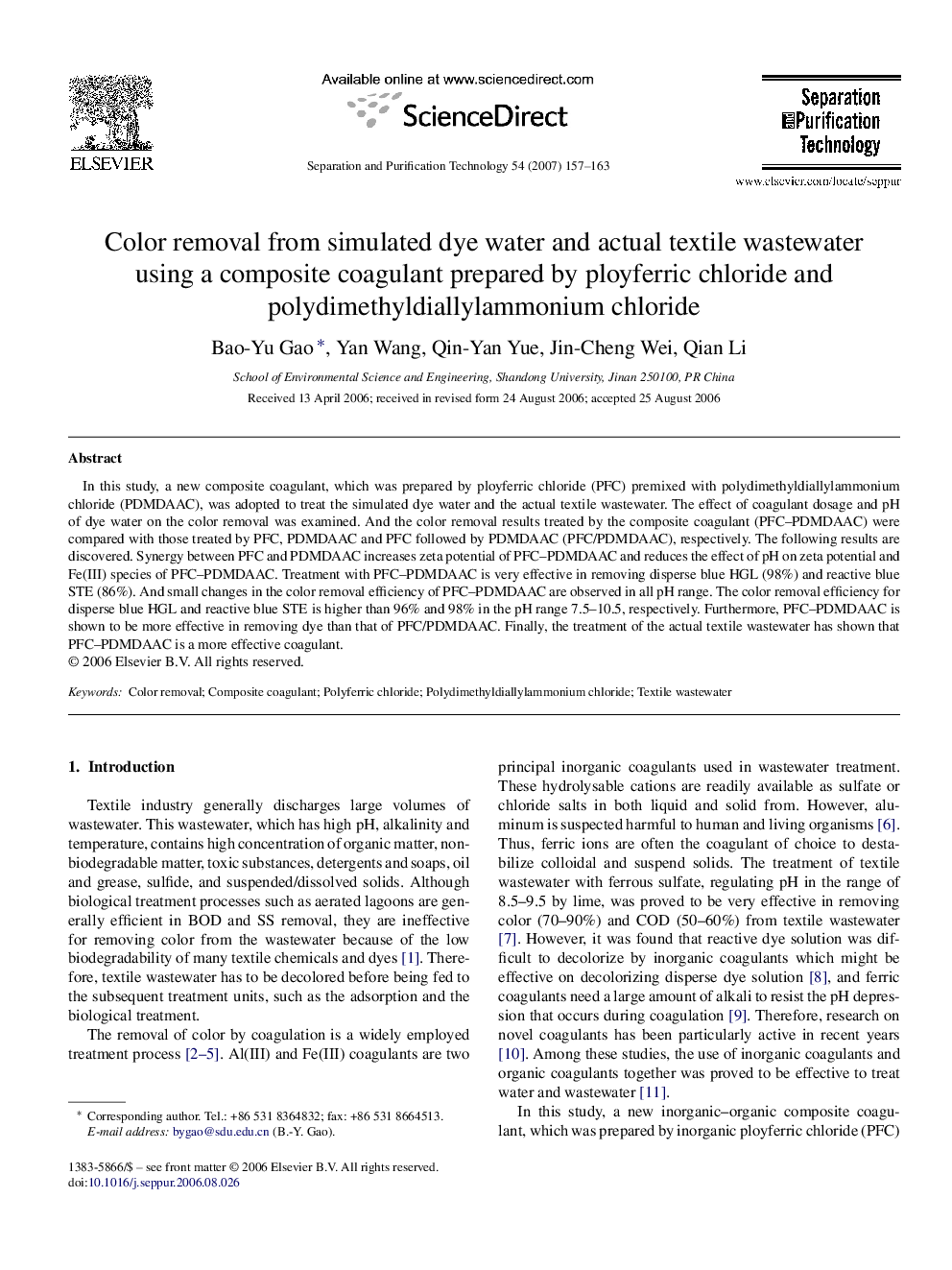| Article ID | Journal | Published Year | Pages | File Type |
|---|---|---|---|---|
| 644076 | Separation and Purification Technology | 2007 | 7 Pages |
In this study, a new composite coagulant, which was prepared by ployferric chloride (PFC) premixed with polydimethyldiallylammonium chloride (PDMDAAC), was adopted to treat the simulated dye water and the actual textile wastewater. The effect of coagulant dosage and pH of dye water on the color removal was examined. And the color removal results treated by the composite coagulant (PFC–PDMDAAC) were compared with those treated by PFC, PDMDAAC and PFC followed by PDMDAAC (PFC/PDMDAAC), respectively. The following results are discovered. Synergy between PFC and PDMDAAC increases zeta potential of PFC–PDMDAAC and reduces the effect of pH on zeta potential and Fe(III) species of PFC–PDMDAAC. Treatment with PFC–PDMDAAC is very effective in removing disperse blue HGL (98%) and reactive blue STE (86%). And small changes in the color removal efficiency of PFC–PDMDAAC are observed in all pH range. The color removal efficiency for disperse blue HGL and reactive blue STE is higher than 96% and 98% in the pH range 7.5–10.5, respectively. Furthermore, PFC–PDMDAAC is shown to be more effective in removing dye than that of PFC/PDMDAAC. Finally, the treatment of the actual textile wastewater has shown that PFC–PDMDAAC is a more effective coagulant.
